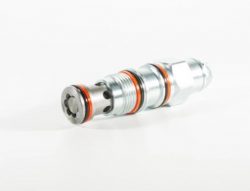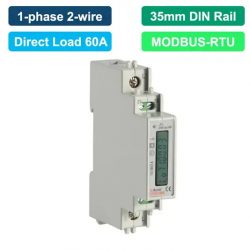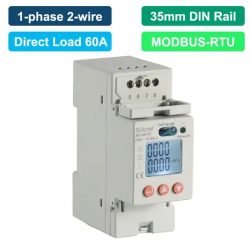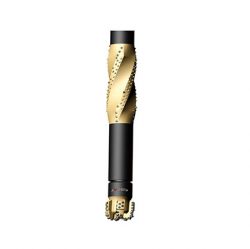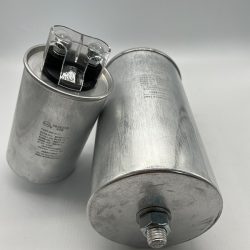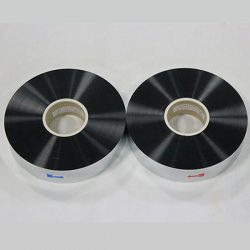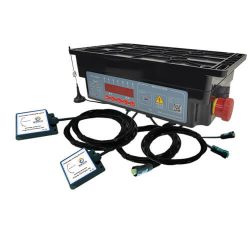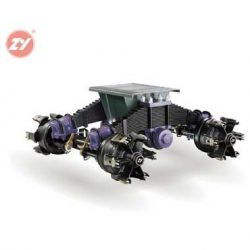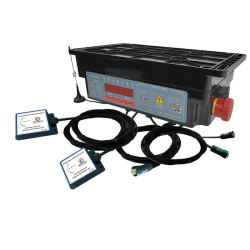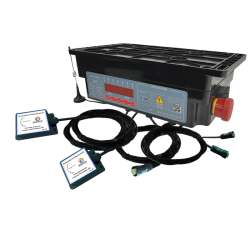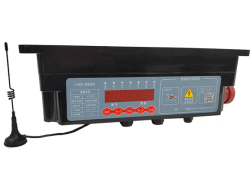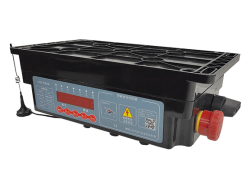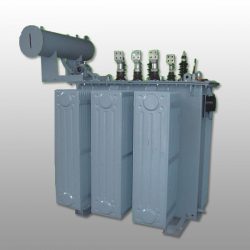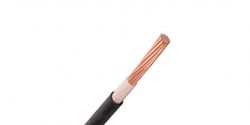Hydraulic Counterbalance Valve
Pilot-assited valve opening flow control is provided by a counterbalance valve. It provides load control and maintenance functions when used in conjunction with a remote control source. The counterbalance valve series includes standard and restrictive types. One-way, relief, and pilot-operated restriction are the functions of restrictive type and standard type counterbalance valve in hydraulic system.
What is A Hydraulic Counterbalance Valve?
A hydraulic counterbalance valve is a type of hydraulic cartridge valve used in hydraulic systems to control the motion of a load and provide stability and safety. It is specifically designed to regulate the flow of fluid in a hydraulic cylinder or motor to prevent uncontrolled movement or overrunning of the load.
The main function of a counterbalance valve in hydraulic system is to create a backpressure in the hydraulic circuit to oppose the gravitational or external forces acting on the load. It achieves this by regulating the flow of fluid from the rod end of the cylinder back to the reservoir. The hydraulic counterbalance valve is typically installed between the directional control valve and the cylinder, controlling the flow in the return line.
Function of Counterbalance Valve in Hydraulic System
INNO counter balance valve is a type of hydraulic valve that serves an important purpose in a hydraulic system. The main function of counterbalance valve in hydraulic system is to provide control and stability by counterbalancing the load, ensuring smooth and safe operation.
The purpose of the counterbalance valve is to prevent a sudden load drop or runaway in the hydraulic system. It achieves this by allowing the flow of fluid from the actuator to the reservoir at a controlled rate. This ensures that the load is lifted or lowered in a controlled manner, preventing any sudden movements that could cause accidents or damage to the equipment.
One of the key features of the INNO counterbalance valve is its ability to provide precise control and adjustability. It allows the user to set the desired pressure at which the valve will start to open, ensuring that the load is safely counterbalanced.
The INNO counterbalance valve is designed to handle high hydraulic pressure, making it suitable for various heavy-duty applications. Its compact size and lightweight design make it easy to install and integrate into hydraulic systems.
Overall, the INNO counterbalance valve plays a crucial role in ensuring the safety and optimal operation of hydraulic systems. It provides precise control, stability, and prevents sudden load drops, making it an essential component in various industries. Get the best performance and reliability with INNO counterbalance valves. Choose INNO for your hydraulic system needs.
Safety Considerations of Using Hydraulic Counterbalance Valves
Load Capacity
Ensure that the hydraulic counterbalance valve is selected based on the load capacity requirements of the application. Exceeding the valve’s load capacity can lead to instability, uncontrolled motion, or potential equipment failure.
01
System Pressure Limits
Adhere to the specified system pressure limits recommended by the valve manufacturer. Operating the hydraulic system beyond its pressure limits can compromise the integrity of the valve and other system components, leading to safety hazards.
02
Overload Protection
Implement additional safety measures such as pressure relief valves or check valves to protect the hydraulic system from overloading. These safety devices can prevent excessive pressure buildup and safeguard against equipment damage or accidents.
03
Proper Installation
Ensure the hydraulic counterbalance valve is installed correctly according to the manufacturer’s guidelines. Improper installation can result in leaks, reduced performance, or system instability, jeopardizing safety.
04
Hydraulic Counterbalance Valve Application
Counterbalance valves in hydraulic system, also known as load-holding valves, are essential components in hydraulic systems that help control the movement of loads in various applications. A counterbalance valve is used for providing a controlled release of hydraulic fluid from a cylinder or hydraulic motor while preventing the load from dropping or the motor from running uncontrollably. Here are some common counterbalance valve applications:
Hydraulic Counterbalance Valve Application
Mining Equipment
Hydraulic machinery used in mining operations, such as drills and shovels, utilize counterbalance valves to control the movement of arms and booms, preventing abrupt movements that could endanger personnel and equipment.
Mobile Equipment and Machinery
Hydraulic counterbalance valves are frequently used in mobile equipment such as forklifts, cranes, excavators, and agricultural machinery. They ensure that heavy loads are safely held in position or lowered gradually, preventing sudden drops and maintaining operator safety.
Lifts and Platforms
Hydraulic lifts and elevating platforms use counterbalance valves to control the descent of the platform or load. This prevents uncontrolled dropping, even if there is a sudden loss of hydraulic pressure.
Aerial Work Platforms
Cherry pickers, scissor lifts, and other aerial work platforms use counterbalance valves to control the extension and retraction of the hydraulic cylinders, allowing operators to work at varying heights safely.
Construction Machinery
Various construction equipment, such as backhoes and loaders, use counterbalance valve in hydraulic system to control the movement of buckets, arms, and other attachments. This ensures that loads are held securely during operation.
Cranes and Hoists
Hydraulic cranes and hoists employ counterbalance valves to prevent uncontrolled lowering of the load, enhancing precision and safety during lifting and lowering operations.





